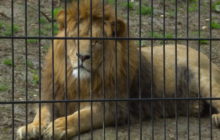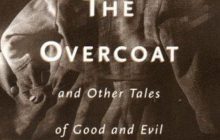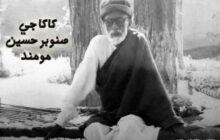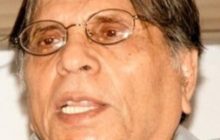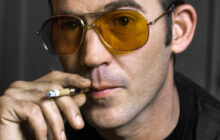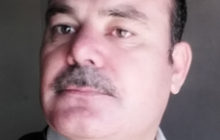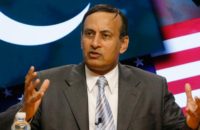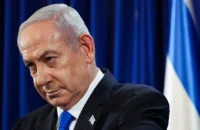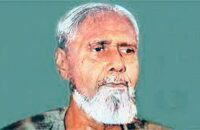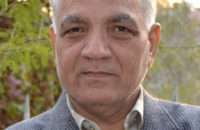It’s here that the IS hopes to set up its sub-HQ, with help from powerful madrasas and clerics
By Khaled Ahmed
As Pakistan denies the growing footprint of the Islamic State (IS) on its soil, its radicalised citizens keep killing “liberals” and members of Muslim sects they don’t like. There’s evidence that Pakistanis are going to Syria “for training”, one angry academic in Islamabad claimed on Geo TV last month that an ex-chief of the ISI, Hamid Gul, recruited for the IS before he died in 2015. Pakistani wives are abandoning their families to join the IS’s jihad as “jihadi wives” or comfort women. According to Newsweek Pakistan, “Late last year, a group of housewives, all from Lahore, had either left or were on their way to Syria to join the Islamic State.”
Newsweek Pakistan also quoted a Pakistani security official as saying: “As the investigation progressed, a small cabal of government officials was discovered to have been collecting information for IS, allegedly because they supported its holy war on the West. We have thus far arrested four suspected government officials from various parts of the Punjab. But we are also aware of IS presence in Sindh and Khyber-Pakhtunkhwa provinces.”
But, inexplicably, Interior Minister Chaudhry Nisar Ali Khan keeps denying the presence of the IS in Pakistan, maybe using as a yardstick the physical presence of Arab representatives of the terrorist outfit. Wall-chalking announcing the presence of the IS has appeared in all big cities, and men have been caught in Karachi writing its message on the walls. But Pakistan doesn’t want to add to its roster of tormentors it has finally decided to confront.
How has the IS made its contact in Pakistan? From evidence, there were communities already softened by the madrasas, charismatic clerics and religious militias, that felt drawn to the pledge of the “khilafat” under “caliph” Abu Bakr al-Baghdadi, now killing fellow Muslims in Syria-Iraq. The MBA graduate, Saad Aziz, who killed a woman human rights advocate, Sabeen Mahmud, in Karachi last year, had started his radical revamp with a highly popular 1990s cleric of Lahore, Israr Ahmad, who rhetorically pledged a “bloody khilafat”, without attracting the mischief of the state. Finding the post-Israr movement too tame, he reached out to al-Qaeda before joining the IS.
The latest addition of Pakistani women to the IS took place through the good offices of a former al-Huda member already posted in Syria.
Al-Huda is an Islamabad-supported elitist women’s organisation recommending a reversion to a re-enacted life of piety. It appeals to upper-crust women showing off their hijab and claiming moral superiority with big moola in the bank. Al-Huda’s founder, Farhat Hashmi, shifted to Canada just before her hero, Osama bin Laden, was killed in Pakistan in 2011. An acolyte of Hashmi in 2015 joined her American husband in California to kill 14 innocent citizens, decisively shifting American public opinion in favour of extremist politicians like Donald Trump.
Police officers in Lahore, used to their India-did-it routine, find it difficult to believe that Pakistani women are making a beeline for the IS. In smaller cities, they are even more clueless, unconsciously as chastisers of Islam-offending sects like Ahmadis. Eight boys from the city of Sialkot were found to have reached Syria as soldiers of the IS. All of them were formerly from the Jamaat-ud-Dawa of Hafiz Saeed, who, like the chief priest of the Lal Masjid of Islamabad, possesses a clout that the state fears. Says Punjab Law Minister Rana Sanaullah: “There must be less than… 100, maybe 50, Pakistanis who have left for Syria.” Then the anti-terrorism department raided Sialkot and arrested Daesh-Islamabad Emir Amir Mansour, who recruited local youths for Rs 30,000 to Rs 50,000 per head to send to Syria “for training”.
Men from the Maldives have gone and joined the IS. Bangladesh and Indonesia have been hit, and an increasingly radical Malaysia is under threat of manpower “leakage” to terror. But it’s here in Pakistan that the IS hopes to set up its sub-HQ with helpful madrasas and powerful clerics. Struggling to control its feudal hinterland in Punjab and Sindh to attain modern statehood, Pakistan finally conquered the feudal lords through jihadi madrasas. First to go under was south Punjab, but now Sindh seems like the next pin to fall — last month, the police got hold of Umar Kathiyo, “emir” of the Islamic State of Sindh, from interior Sindh. An Arabic-speaking local, he had been representing al-Qaeda Indian Subcontinent (AQIS) and was good at raising funds through bank robberies and kidnappings. The IS got him to massacre a bus full of Ismailis in Karachi in 2015.
Will Pakistan fall to the IS, just as it did to al-Qaeda and couldn’t resist bin Laden’s decision to live in Abbottabad, close to the terrorist camps he was funding? Will Pakistan become the IS’s “Khorasan”? There are reports that the IS will be contained in Afghanistan because the rising Taliban will take it on. Michael Kugelman of the Woodrow Wilson Centre notes: “But here is the good news: ISIS will struggle mightily to make major inroads in the Afghanistan-Pakistan region, and it certainly will not be in a position to seize large expanses of territory. There is little chance that ISIS can do in Pakistan and Afghanistan what it has done in Iraq and Syria.”
It might not pan out the way predicted above. If the world doesn’t put an end to the IS’s spreading financial footprint in the Middle East — much of it remittances from a scared Sunni Gulf — Afghanistan will succumb happily enough, given the Taliban’s vulnerability to dollars.





